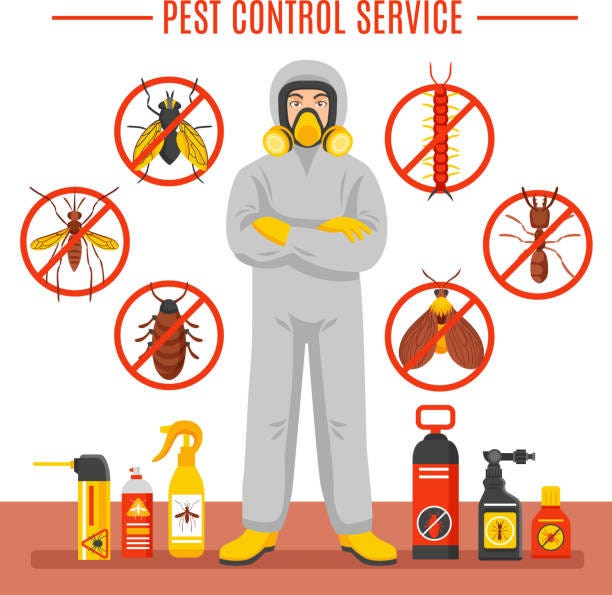A1 Bed Bug Exterminator Charlotte - Reliable and Cost Effective Services
A1 Bed Bug Exterminator Charlotte - Reliable and Cost Effective Services
Blog Article
Bed Pest Treatment Breakdown: Contrasting Chemical Vs. Non-Chemical Solutions
In the world of parasite control, particularly when managing the consistent problem of bed bugs, the option in between chemical and non-chemical treatment options can be a crucial one. Both techniques supply distinct advantages and downsides, affecting aspects such as efficiency, security considerations, and overall cost. By examining the nuanced information of each technique, a more clear understanding of which course to pursue in attending to a bed pest problem can be obtained.
Performance of Chemical Therapies
Chemical treatments for bed insect infestations have actually been extensively identified for their quick and powerful efficiency in eradicating these pests. When considering the performance of chemical treatments, it is essential to comprehend that they can supply a complete and fast option to a bed pest issue.
Additionally, chemical treatments have the advantage of supplying residual results, implying that they can continue to remove bed bugs also after the initial application. This residual action is particularly useful in combating any possible re-infestations. Furthermore, the rapid activity of chemical treatments can bring relief to people facing serious bed bug problems, permitting them to gain back control of their space rapidly.
Security Interest In Chemical Solutions
One vital facet that calls for cautious consideration when making use of chemical services for bed pest therapy is guaranteeing the safety and security of passengers and the atmosphere. Direct exposure to specific chemicals used in bed bug therapies can lead to respiratory system concerns, skin inflammation, or various other negative reactions, specifically in individuals with pre-existing problems or sensitivities.
Moreover, the ecological impact of chemical solutions is an additional considerable consideration. Some pesticides made use of in bed bug therapies may be harmful to helpful bugs, wild animals, and ecosystems if they leach right into the dirt or water systems. It is essential to utilize chemical treatments deliberately, complying with safety standards, and considering less toxic alternatives to mitigate these risks and make certain the secure and effective management of bed bug invasions.
Advantages of Non-Chemical Strategies
Considering the potential safety and security problems and ecological effect connected with chemical options for bed pest therapy, exploring non-chemical approaches provides an encouraging option with a number of distinctive benefits. Non-chemical treatments are eco friendly, as they do not add to air or water air pollution, making them a sustainable choice for parasite control.
In addition, non-chemical solutions can be effective in targeting bed pests, including hard-to-reach locations where chemical therapies may not pass through. Techniques such as warm therapy, vacuuming, steam cleansing, and mattress encasements supply thorough removal without using hazardous chemicals. In addition, non-chemical approaches can be much less disruptive, calling for very little prep work and permitting quicker reentry into treated locations. In general, opting for non-chemical bed insect therapy methods not just prioritizes safety and security and environmental defense yet also makes certain extensive and reliable pest control.
Limitations of Non-Chemical Treatments

In addition, non-chemical treatments usually call for numerous applications to achieve successful removal. This can be taxing and might not constantly guarantee total elimination of all bed pests and their eggs, especially in hidden or hard-to-reach places.
In addition, the success of non-chemical therapies heavily depends on appropriate execution and thoroughness, which can be testing for individuals without expert competence. Poor application of non-chemical methods may lead to insufficient obliteration, leading to relentless problems and the demand for additional therapies.
Consequently, while non-chemical therapies have their advantages, it is vital to recognize these constraints and consider them when determining the most effective method for handling bed insect invasions.
Price Contrast: Chemical Vs. Non-Chemical Options
Provided the restrictions linked with non-chemical therapies, a vital element to assess in the context of bed insect administration is the price contrast between chemical and non-chemical options. Chemical therapies generally involve the application of pesticides by experts, which can range from $250 to $900 per area, depending on the site link severity of the infestation and the size of the area to be treated. In contrast, non-chemical therapies like warmth therapy or steam can be much more pricey, with costs ranging from $1,000 to $6,000 for a whole home. While the first price of chemical treatments might appear lower, multiple therapies might be required to completely eliminate the invasion, potentially raising the general cost. On the other hand, non-chemical options might supply a more environment-friendly and sustainable option, although they can be cost-prohibitive for some individuals. Eventually, when thinking about the expense of bed bug therapy choices, it is essential to consider the ahead of time costs against the efficiency and long-term sustainability of the selected method.
Final Thought

Taking into consideration the possible safety issues and environmental effect linked with chemical solutions for bed pest therapy, checking out non-chemical strategies presents an appealing option with several distinct benefits.Provided the constraints linked with non-chemical treatments, an important element to review in the context of bed bug management is the expense contrast between chemical and non-chemical options. In contrast, non-chemical treatments like warm treatment or steam can be a lot more pricey, with prices varying from $1,000 to $6,000 for a whole home. While the first cost of chemical treatments may seem lower, several treatments might be called for to fully eradicate the infestation, potentially increasing the general price.In verdict, when contrasting chemical and non-chemical bed pest therapy choices, it is crucial to take into consideration effectiveness, safety, advantages, constraints, and cost.
Report this page